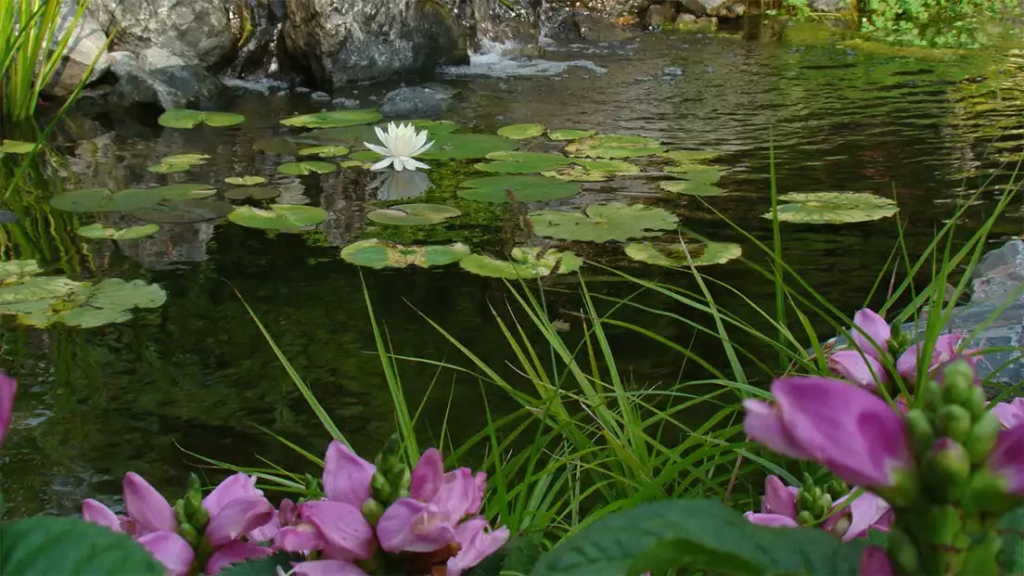Creating and maintaining a swim pond adds beauty and enjoyment to your property. However, ensuring it remains clean and healthy throughout the year requires knowledge about seasonal tasks, plant care, and water-quality management. Whether you are a new pond owner or looking to refine your maintenance routine, understanding essential practices will help you maintain a serene swimming oasis.
In this guide, you will discover how to keep your swim pond crystal clear throughout the seasons, tackle common water quality issues, embrace natural filtration techniques, and learn effective maintenance strategies. From practical cleaning tips to exploring new technologies, this article provides comprehensive information to help you maintain a healthy and vibrant swim pond.
How to Keep Your Swim Pond Crystal Clear Year-Round
To enjoy a clean swim pond, it is essential to implement regular maintenance practices consistently. The clarity of your pond’s water is influenced by several factors, including the presence of aquatic plants, natural filtration methods, and seasonal cleaning routines.
Aquatic plants are crucial for keeping the water clear. Submerged plants like Hornwort and Elodea provide essential oxygenation and can help prevent algae growth by competing for nutrients. Riparian plants effectively absorb excess nitrogen and phosphorus, which can lead to algae blooms.
Regular cleaning is also key. Implement a maintenance schedule to remove fallen leaves, debris, and accumulated sediment. This not only keeps the water pristine but also prevents harmful buildup that could harm the ecosystem.
Monitoring water quality and temperature changes throughout the year is crucial. Keeping an eye on pH levels, oxygen content, and nutrient concentrations allows you to address potential issues proactively.
Image of a well-maintained swim pond showcasing vibrant aquatic plants (Source: Reflections Water Gardens)
Seasonal Shifts: Adapting Your Maintenance Routine
As seasons change, so do the maintenance needs of your swim pond. Adjusting your care routine based on the unique challenges presented by each season ensures that your pond thrives.
Spring: As temperatures rise, it’s essential to clean the pond thoroughly. Remove winter debris, check the water temperature, and when it reaches around 50°F, restart any pumps and aeration systems. Consider reintroducing your aquatic plants if they were put into storage during colder months.
Summer: The warmer months require closer attention to water quality. Regularly monitor it, looking for signs of algae blooms. Utilize natural solutions like beneficial bacteria treatments and ensure aquatic plants are well-maintained. Increased photosynthesis during this time means more oxygen in the water, which benefits aquatic life.
Fall: As leaves begin to fall, removing them promptly is crucial to prevent decay and maintain good water quality. Prepare your plants for winter by trimming back overgrown vegetation and performing a partial water change if needed to prep for cooler temperatures.
Winter: If you live in a colder climate, winterizing your pond is vital. Clean the pond thoroughly, install de-icers as necessary to maintain open areas in the ice, and reduce fish feeding to prevent overloading the system. Protect your equipment to avoid freeze damage.
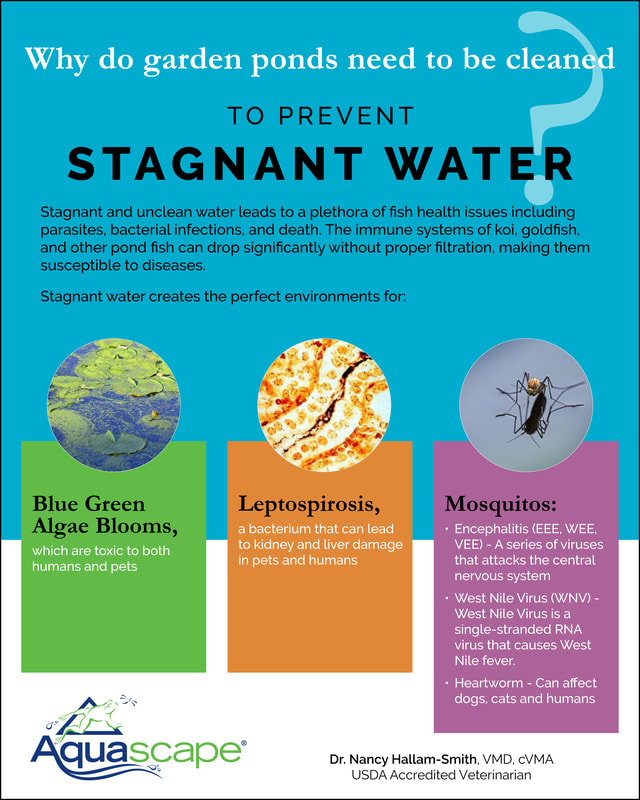
Seasonal maintenance checklist infographic (Source: AWM Water Features)
Winterize to Preserve: Steps for Protecting Your Swim Pond
Proper winterization is key to safeguarding your swim pond during colder months. Taking the right steps ensures it stays healthy and avoids potential damage.
Begin with a thorough cleaning before freezing temperatures arrive. Remove debris, including fallen leaves and organic matter, which can lead to poor water quality when they decompose.
Installing heaters or de-icers is also necessary to keep areas in the ice open. This allows for gas exchange and helps harmful gases escape while providing a habitat for fish.
Consider the status of the plants in your pond, too; move any non-cold-hardy plants into a sheltered location or indoors.
Once the ice melts, be patient and allow the biological system to stabilize before reintroducing fish or other aquatic life.

Image of a winterized swim pond with visible de-icers (Source: Splash Supply)
Natural Algae Control: Effective Management Strategies
Managing algae in your swim pond can be achieved through natural methods, creating a balanced ecosystem and promoting an enjoyable swimming experience.
Aquatic plants are your best allies against algae growth. Species like water lilies and duckweed provide shade and limit sunlight penetration, while also absorbing excess nutrients directly from the water.
Additionally, beneficial bacteria treatments can assist in nutrient management, effectively breaking down organic waste. Aeration systems not only disperse algae but also raise oxygen levels in the pond, crucial for maintaining a healthy aquatic environment.
Regularly monitor water quality, especially in the hotter months. Keep an eye on nutrient levels; excessive nitrogen and phosphorus can create conditions favorable for algae blooms.
Implementing these natural algae control methods will promote a balanced ecosystem, minimizing the need for chemical treatments.

Image showcasing water lilies in a pond, highlighting their role in algae control (Source: Pond Country)
Must-Have Tools for Effective Pond Maintenance
To effectively maintain your swim pond, being equipped with the right tools is essential. Here are key items every pond owner should consider:
- Skimmers: These remove floating debris from the water surface.
- Pumps: Crucial for water circulation, preventing stagnation.
- Aquatic Rakes and Nets: Useful for removing large debris and aquatic weeds.
- Aerators: They increase oxygen levels, which benefit fish and beneficial bacteria.
- Water Testing Kits: Regularly monitoring pH and nutrient levels is vital for maintaining healthy water.
Investing in quality maintenance tools not only improves the efficiency of your routine but also contributes to a healthier pond. Regular use will prolong the lifespan of your equipment, making it a cost-effective choice over time.
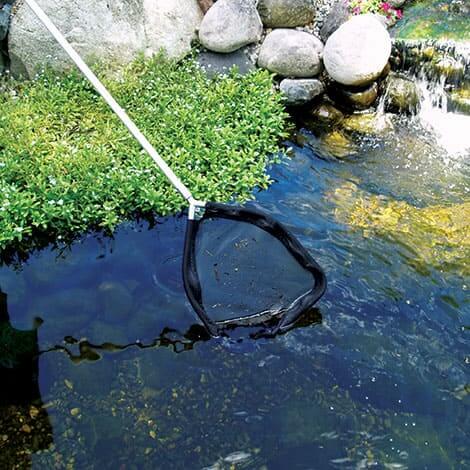
Image collage of essential tools for pond maintenance (Source: BigCommerce)
Balancing Costs: Swim Ponds vs. Traditional Pools
When considering the financial commitment of a swim pond, it can be helpful to understand how it compares to traditional chlorinated pools.
Installation Costs: Swim ponds usually require an initial investment between $50,000 and $100,000, compared to traditional pools, which typically cost between $30,000 and $65,000.
Maintenance Costs: Annual maintenance for swim ponds ranges from $200 to $525, while traditional pools incur costs from $400 to $900 due to regular chemical and energy requirements.
Over time, swim ponds can result in reduced operational costs. They use significantly less energy thanks to natural filtration processes and require minimal chemical treatments.
The long-term savings associated with swim ponds highlight their value. Though initial costs may be higher, the potential for savings, alongside ecological benefits, makes them a wise investment.

Graph comparing the costs of maintaining a natural swimming pool versus a traditional pond (Source: HomeGuide)
Common Water Quality Challenges and Solutions
Swim ponds can face various water quality issues, such as algae growth, cloudy water, and nutrient excess. Being aware of these challenges allows you to address them effectively.
Algae growth is one of the most common problems. Excessive algae can cause green water and unsightly surface scum. Solutions include introducing beneficial aquatic plants for nutrient absorption and using UV clarifiers to reduce single-celled algae populations. Regular cleaning plays an important role in managing algae and preventing regrowth.
Another issue is poor water clarity. Installing effective filtration systems can help alleviate this problem by removing contaminants and enhancing aesthetics. Regular water quality testing, especially after heavy rain, is advisable to ensure overall pond health.
Maintaining good water quality is an ongoing effort. By implementing preventative measures and monitoring consistently, you can enjoy a clear, healthy swim pond throughout the year.
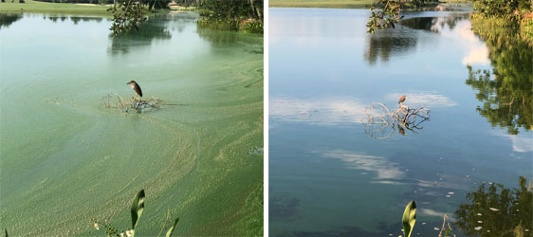
Before and after images showing algae blooms in a pond and the results after intervention (Source: Solitude Lake Management)
Innovative Technologies for Swim Pond Maintenance
New technologies are improving how swim ponds are maintained, offering innovative solutions to traditional challenges and enhancing overall efficiency.
One noteworthy method is Floating Treatment Wetlands (FTWs), which allow aquatic plants to grow in deeper water and absorb excess nutrients. BioElectrochemical treatment technologies utilize microbes to break down pollutants while generating electricity, improving water quality sustainably.
Advanced biodynamic systems that leverage worms and beneficial microbes can significantly reduce contaminants in pond water. These innovations reflect the evolving landscape of natural water management and facilitate sustainable practices.
By staying informed about these developments, you can implement strategies that not only improve water quality but also streamline your maintenance routine.
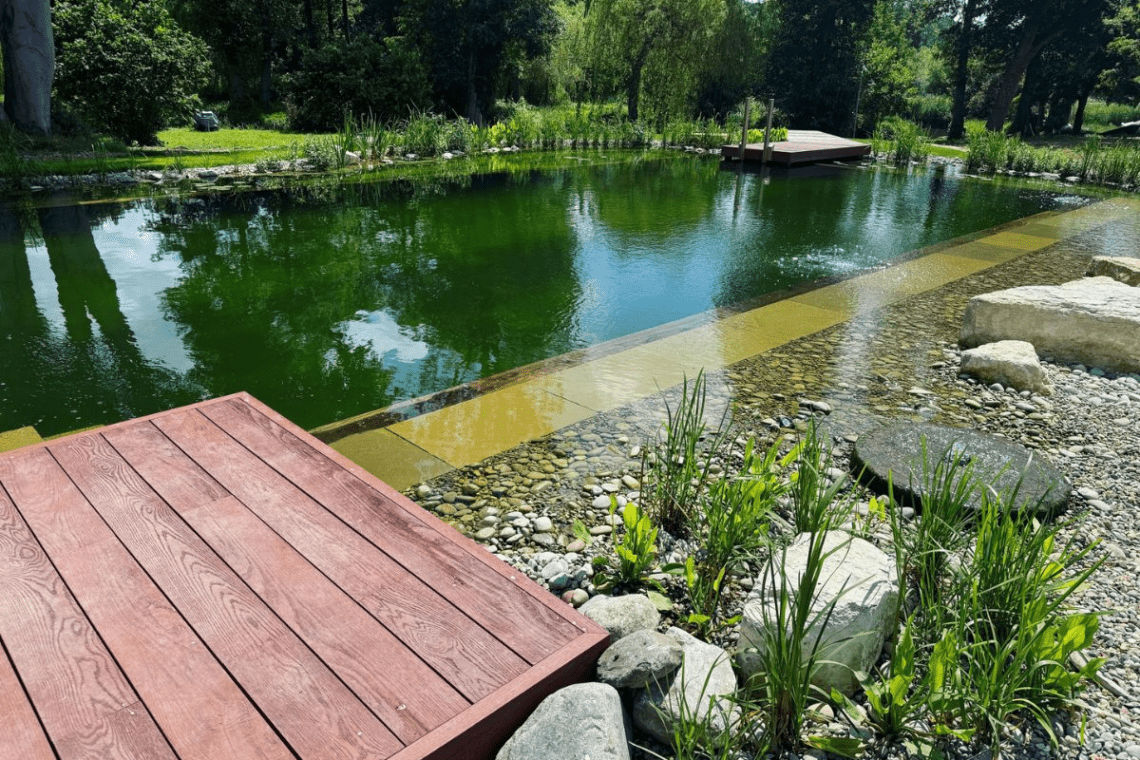
Illustration showcasing eco-friendly water systems designed for swim pond maintenance (Source: Pond and Garden Design)
Conclusion
Maintaining a swim pond is a rewarding endeavor that enhances your outdoor space’s natural beauty. By understanding seasonal maintenance tasks, utilizing natural filtration systems, and embracing modern technologies, you can sustain a healthy swimming environment that stays functional and inviting year-round.
Investing time and resources into proper care pays off in the form of clear water, reduced costs, and a balanced ecosystem. As you maintain your swim pond, remember that consistent attention benefits not just the pond’s health but also creates a peaceful retreat for you and your family to enjoy. Embrace these practices, stay informed about innovations in pond care, and your swim pond will thrive for years to come.

